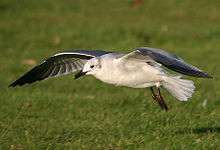Vagrancy (biology)

Vagrancy is a phenomenon in biology whereby individual animals appear well outside their normal range; individual animals which exhibit vagrancy are known as vagrants. The term accidental is sometimes also used. There are a number of factors which might cause an individual to become a vagrant — genetic factors and weather conditions are two — but the causes are overall poorly understood. Vagrancy can be a precursor to colonisation if individuals survive.
Vagrancy is known to occur in birds, insects, mammals and turtles.
In birds
In the Northern Hemisphere, adult birds (possibly inexperienced younger adults) of many species are known to continue past their normal breeding range during their spring migration and end up in areas further north (such birds are termed spring overshoots.)
In autumn, some young birds, instead of heading to their usual wintering grounds, take "incorrect" courses and migrate through areas which are not on their normal migration path. For example, Siberian passerines which normally winter in Southeast Asia are commonly found in Northwest Europe, e.g. Arctic warblers in Britain. This is reverse migration, where the birds migrate in the opposite direction to that expected (say, flying north-west instead of south-east). The causes of this are unknown, but genetic mutation or other anomalies relating to the bird's magnetic sensibilities is suspected.[1]
Other birds are sent off course by storms, such as North American birds, blown across the Atlantic Ocean to Europe. Birds can also be blown out to sea, become physically exhausted, land on a ship and end up being carried across the ocean.
In insects
Vagrancy in insects is recorded from many groups — it is particularly well-studied in butterflies and moths, and dragonflies.
In mammals
In mammals, vagrancy has been recorded for bats, pinniped seals, whales and manatees.
In reptiles
Vagrancy has been recorded for turtles, snakes (e.g. Pelamis platura ), crocodilians, and probably also occurs in lizards. It therefore seems to be a fairly widespread phenomenon in reptiles. Saltwater crocodiles are especially prone to vagrancy, with individuals occasionally being recorded in odd places including Fiji, Iwo Jima, and even the Sea of Japan.
Alternative uses in botany
The term vagrant is also used of plants (e.g. Gleason and Cronquist, 1991), to refer to a plant that is growing far away from its species' usual range (especially north of its range) with the connotation of being a temporary population. In the context of lichens, a vagrant form or species occurs unattached to a substrate ("loose"), not necessarily outside its range.[2]
References
- ↑ Vinicombe, Keith; David Cottridge (1996). Rare birds in Britain and Ireland a photographic record. London :: Collins,. pp. 192p., 96p. of col. plates : ill., maps ; 24 cm. ISBN 0-00-219976-9.
- ↑ Rosentreter, R. & McCune, B. 1992. Vagrant Dermatocarpon in Western North America The Bryologist. 95:15-19.